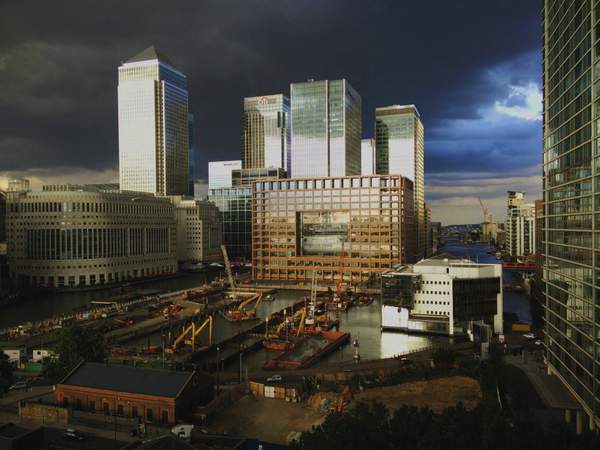Determining and understanding how market values are calculated in the UK may, on the surface, seem like standardised practices, with consistent review mechanisms that ensure a level playing field within any given property postcode. However, as we have already discussed, the somewhat misleading definition of what ‘affordable’ housing actually means today throws new light on the definition of ‘value’.

Definition of property value
The principal concept of property value rests on three fundamental factors, according to Royal Institution of Chartered Surveyors (RICS) in the RICS Manual of Valuation and Appraisal (1996):
- Price sold
- Subjective value to owner and/or third parties
- Market value
If the concepts of value and ‘worth’ were limited to these three principles alone, further analysis would perhaps prove fruitless. In reality, the process is open to subjectivity on a wider scale, and price estimations that do not always come to fruition – for example, Brexit hitting the value of luxury London developments this summer.
Factors at play
Between 1975 and 2014, real house prices rose by 126% (adjusted for the effects of inflation), but hourly wage growth for 21-year-olds was just £1.51 less than today’s minimum wage of £6.70. This finding should dismiss the argument that wages are now higher, therefore owning your own home has also become easier. In other words, your grandparents probably did have it easier.
If policies like Right to Buy and Help to Buy merely shift parts of the population from one property type to another, without increasing the overall stock, the economics of supply and demand begins to shift. More demand than supply becomes a constant feature in cities like London, rather than a variable. Once this constant (that pushes up prices) becomes the norm, as it has in London, gaps get created in the market to develop ever more expensive property on top of an inflated base rate. This creates a situation where worth and value are subjective rather than based on standardised measures.
Today, other factors are at play. For example, current and future gentrification projects and upcoming infrastructure upgrades continuously inflate London house prices, despite houses and wages in those areas remaining as they were. It could be argued that money laundering, particularly in the capital, has artificially elevated prices, while the Bank of England has inflated prices through property fund investment, quantitative easing measures and by holding down UK interest rates. In the aftermath of the 2008 crash, it could also be argued that worth and value in the UK property market has focused on monetary moves to squeeze profit to pump into the economy, and placing social measures that benefit the overall populace on the backburners.

NPPF revision
As part of the government’s consultation on how to revise the National Planning Policy Framework (NPPF), the planning policy definition of Affordable Housing (which currently includes social rented, affordable rented and intermediate housing) will be amended so that the term encompasses a full range of products, for example, discount market sales or ‘rent to buy’ housing. The consultation also sets out plans to encourage housing developments around new and existing commuter hubs to secure wider regeneration.
These two measures fall in line with current price inflation trends: dramatic price increases along the Crossrail line and the transference of social housing to the affordable housing market, for example. Whether this is part of an overall plan; to create policies based on monetary trends rather than social factors, is a speculation at this point. The government will publish revisions this autumn.
Click here to view the full consultation
Private Rented Sector – value timeline
Tenure neutral policies first grew the PRS sector during the 1980s, which coincided with the introduction of Right to Buy in the social housing sector and sell-off of state assets. The bias toward PRS developments continued throughout the 1990s, but as a 2010 paper produced by the University of Reading stated, ‘the private rented sector [provided] lifetime homes for only a few households; instead it is a ‘lifestyle’ or ‘stage in life’ choice.’ This illustrates that there has been a seismic shift in how the PRS is viewed for Britons in a short six year period.
Back in 2001, 10.6% of UK households lived in the PRS and 16.4% in Greater London. Today, that number has more than doubled, with 4.9 million UK households now within the PRS. At the same time, social rental options had fallen by one million properties, and home ownership figures had fallen to a 30 year low. Arguably, this might reveal that the definition of what is deemed valuable in today’s property market has become narrower, which has not only driven the PRS but also alternative asset classes like student accommodation.

The market today
The good news for ‘Generation Rent’ is that prices in the PRS are rising at a much slower rate than house prices. However, the fact is that property prices have shown immense resilience and strength after a succession of uncertain economic events, most notably the 2008 crash and the recent Brexit vote.
Since the recession, property options that are deemed as ‘valuable’ have been more finely tuned to recover losses during this period. In turn, the ‘Striver VS Skiver’ narrative has become more ingrained in the public psyche, lessening the impact of asset stripping in the social housing sector.
Subjective elements of what makes up a markets value are now more prevalent in the quest for higher yields and justifying ever higher property prices. However, natural factors like a growing population and land availability within large cities have not only made property developments more challenging to execute but inevitably more expensive.
The definition of market value, understanding benchmark land value, and much more will be discussed at our annual Viability and Planning conference this September. From bricks and mortar to investment ‘safe havens’ in London, we’ll be discussing the current market and how conditions for homeowners, local authorities and developers have changed. Click here to book your place, or if you have any queries concerning the event, please email us at [email protected]